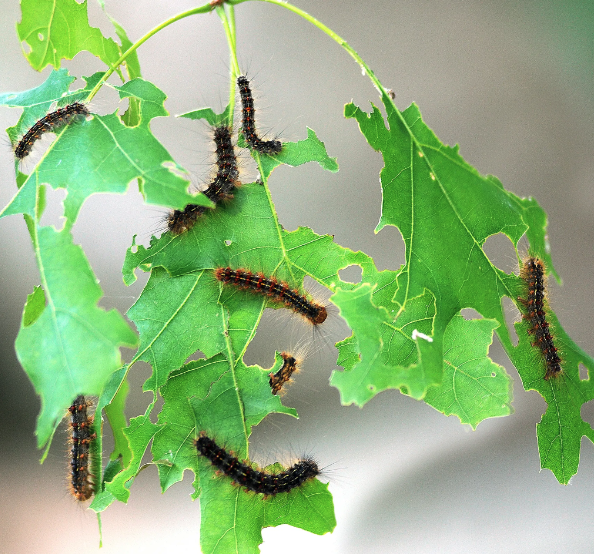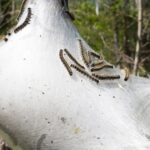Gypsy Moth: A Voracious Pest in Your Backyard
The gypsy moth, scientifically known as Lymantria dispar, is an invasive insect that can cause significant damage to trees and landscapes. Originally from Europe and Asia, these voracious pests have made their way into North America, becoming a prominent concern for homeowners and gardeners. In this article, we will explore the world of gypsy moths, their characteristics, signs of infestation, and effective measures to manage their presence and protect your outdoor spaces.
Identification:
Gypsy moths undergo a complete metamorphosis, transitioning from eggs to caterpillars, pupae, and eventually adult moths. The female moths are white with dark markings, while the male moths are smaller and dark brown. The caterpillars are the most destructive stage, with a distinctive appearance featuring a hairy body covered in bristle-like hairs.
Life Cycle and Behavior:
Gypsy moths lay their eggs in masses on trees, structures, or outdoor objects. These egg masses can contain hundreds of eggs. When the caterpillars hatch, they start feeding on leaves and foliage voraciously, causing defoliation and weakening the trees. After feeding for several weeks, they pupate and transform into adult moths, beginning the cycle anew.
Signs of Infestation:
Identifying a gypsy moth infestation can help prevent extensive damage. Keep an eye out for the following indications:
- Egg Masses: Gypsy moth eggs are typically found on tree trunks, branches, or outdoor furniture. They appear as tan or buff-colored fuzzy masses, often covered with a protective layer.
- Defoliation: As the caterpillars feed on leaves, they can cause noticeable defoliation, leading to bare branches and reduced canopy density.
- Hairy Caterpillars: The gypsy moth caterpillars are hairy and can be easily seen crawling on trees, walls, or other surfaces. They have a preference for oak, birch, and other deciduous tree species.
- Presence of Adult Moths: During the mating season, you may observe male gypsy moths flying around, attracted to the flightless females.
Management and Control:
Managing gypsy moth populations requires a combination of preventive measures and active control methods. Consider the following strategies:
- Egg Mass Removal: Scrape off and destroy gypsy moth egg masses from trees, structures, or outdoor items during late summer or early spring to prevent caterpillar emergence.
- Physical Barriers: Wrap tree trunks with burlap bands during the caterpillar stage to catch and remove them manually.
- Biological Control: Encourage natural enemies of gypsy moths, such as parasitic wasps, birds, or predatory insects, by creating a diverse and wildlife-friendly environment.
- Insecticides: In severe infestations, chemical insecticides may be used. Consult with local authorities or pest control experts for safe and effective options, and follow the instructions carefully.
- Tree Health Care: Maintain the overall health of trees through proper watering, fertilization, and pruning. Healthy trees are better equipped to withstand gypsy moth feeding and recover from defoliation.
- Public Cooperation: Stay informed about gypsy moth outbreaks in your area and participate in community efforts, such as monitoring and reporting sightings, to collectively manage the population.
The gypsy moth poses a considerable threat to trees and landscapes, but with proactive management, their impact can be minimized. By remaining vigilant, taking preventive measures, and employing appropriate control methods, you can protect your outdoor spaces from the destructive feeding habits of gypsy moth caterpillars. Remember, early intervention is crucial in preserving the health and beauty of your trees and maintaining a thriving ecosystem.




